There’s something about planting a fruit tree that makes it feel like you’re setting down both literal and figurative roots. Since these plants take multiple years to begin producing fruit, adding one to your land shows you’re committed to the place and its future. If you’re anything like me, the hardest part of planting a fruit tree is knowing which one to choose!
Whether you’re interested in apples, peaches, figs, or cherries, spring is a great time to plant a fruit tree in the ground. The air is warm enough to protect the plants from frost but not hot enough to stress the plants. By the time summer’s heat arrives, the trees will be acclimated to their new homes.
I’ve compiled 15 fruit tree varieties you can plant this spring. Some are known for their cold hardiness, and others are prized for their carefree nature, but they all produce delicious fruits.
‘Contender’ Peach
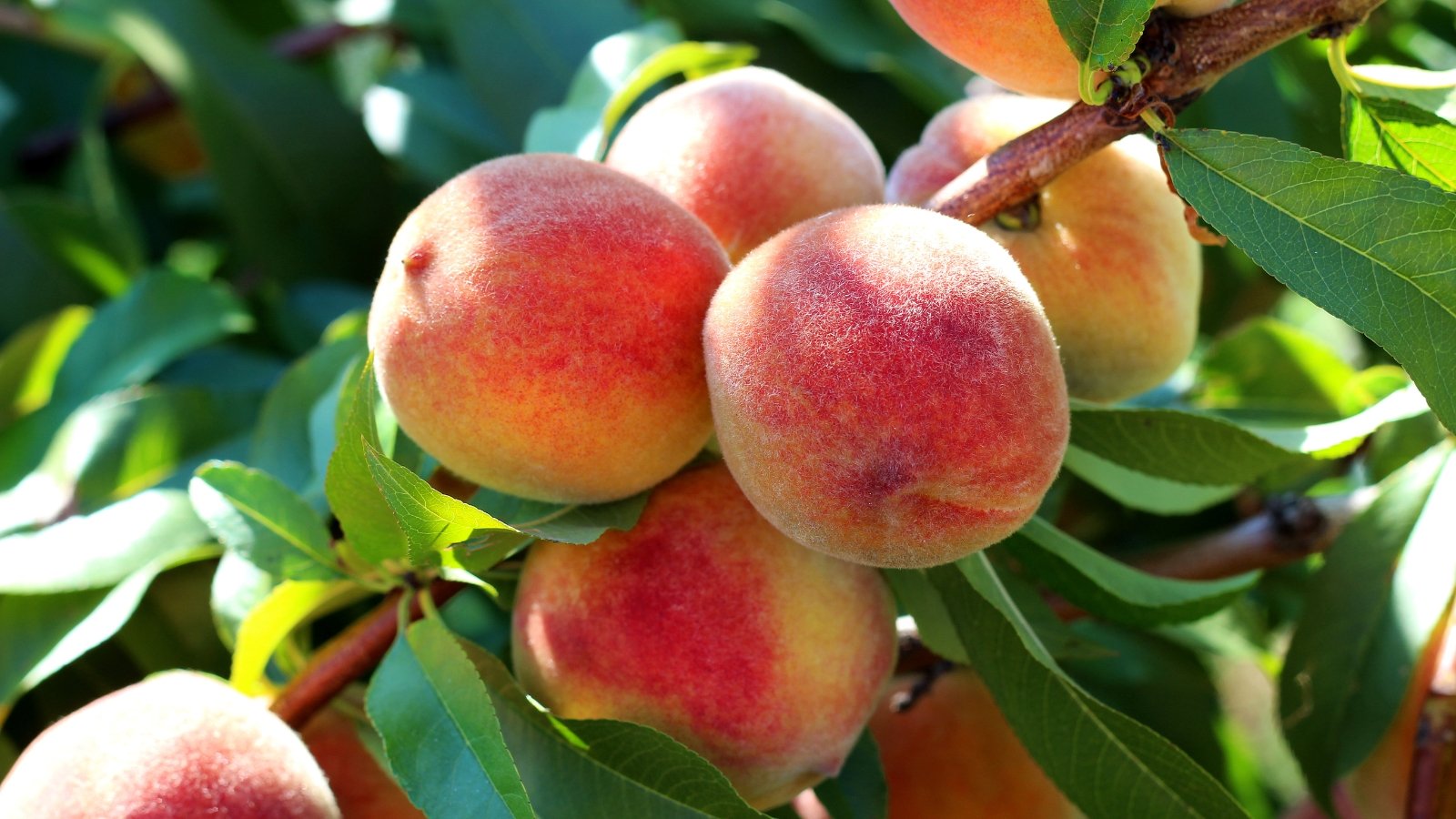
Peach trees are known to be warm-climate fruits, but varieties like ‘Contender’ allow gardeners in colder climates to grow peaches successfully. This cold-hardy variety can survive hard frosts and produce juicy peaches in areas as cold as Wisconsin and Montana! However, the variety’s strong disease resistance and large yield also make it a popular choice in the Southeast and Central United States.
‘Contender’ produces freestone peaches with juicy yellow flesh that easily separates from the pit. The fruits are medium to large and typically ripen from the middle to the end of summer. The tangy and sweet peaches are delicious when eaten fresh and work well for canning or freezing.
These trees are medium-sized and produce a rounded canopy. They are self-fertile, so you only need one tree for the plants to produce fruits. However, growing more than one tree will increase fruit set and yield.
‘Black Mission’ Fig
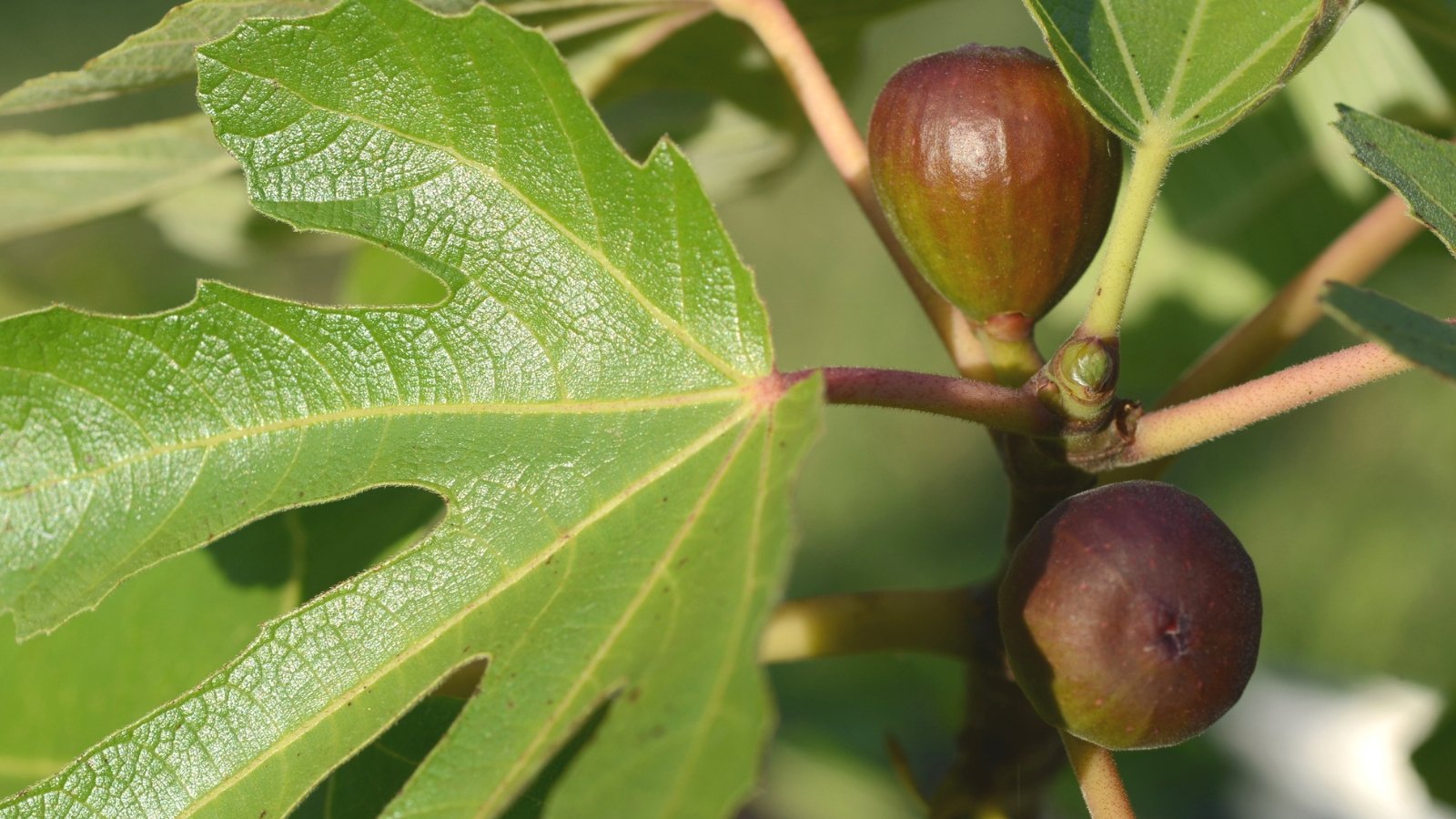
‘Black Mission’ fig trees are among the most popular fig varieties for home gardeners. The trees produce loads of dark purple teardrop-shaped fruit with bright pink flesh. The trees were originally brought to the U.S. by Spanish missionaries, hence their common name.
Like all fig varieties, the tree’s mature size depends on your pruning practices. While you should always prune out crossing branches, suckers, and dead wood, you can also trim the plants to keep them on the smaller side. Regardless of your pruning methods, you’ll only need one plant for this variety to produce fruit.
Healthy ‘Black Mission’ trees typically produce two crops a year. They produce a small breba crop in the spring on last year’s wood and then a larger late summer crop on new growth.
‘Elberta’ Peach

The ‘Elberta’ peach has been a favorite variety for home gardeners since it emerged in Georgia in 1870. The pink flowers are self-fertile, so you only need one tree to produce fruit. That means ‘Elberta’ trees are an excellent fruit tree to plant this spring if you have a small yard or want to plant a handful of different tree fruits.
Another prized aspect of ‘Elberta’ trees is their fast growth rate and their tendency to produce large crops in their third or fourth year of growth. The fruits are freestone, medium in size, and have red-orange skin with a beautiful yellow blush. Expect ripe peaches as early as late July, but be aware fruits tend to ripen later the further north you travel.
Like most peach trees, ‘Elberta’ trees grow best in full sun and well-drained soil. The plants can grow up to 25 feet tall, so make sure to choose an area that allows for the plants to safely expand.
‘Brown Turkey’ Fig

If you want a fig suitable for fresh eating and preserving, ‘Brown Turkey’ is an excellent option. This variety produces medium to large fruits with purple-brown skin and bright pink flesh. The fruits are delicious when eaten fresh, but their large size makes them good candidates for drying and cooking into preserves.
‘Brown Turkey’ trees can produce two crops per year: a small breba crop in the spring and a large main crop in the late summer or early fall. Even heat helps the plants produce fruit, so consider planting your tree near a south-facing wall if you live in zone seven. Although this variety is known for its cold-hardiness, protect the plants with mulch if temperatures are expected to dip below 10°F (-12°C).
‘Texas Pink’ Pomegranate
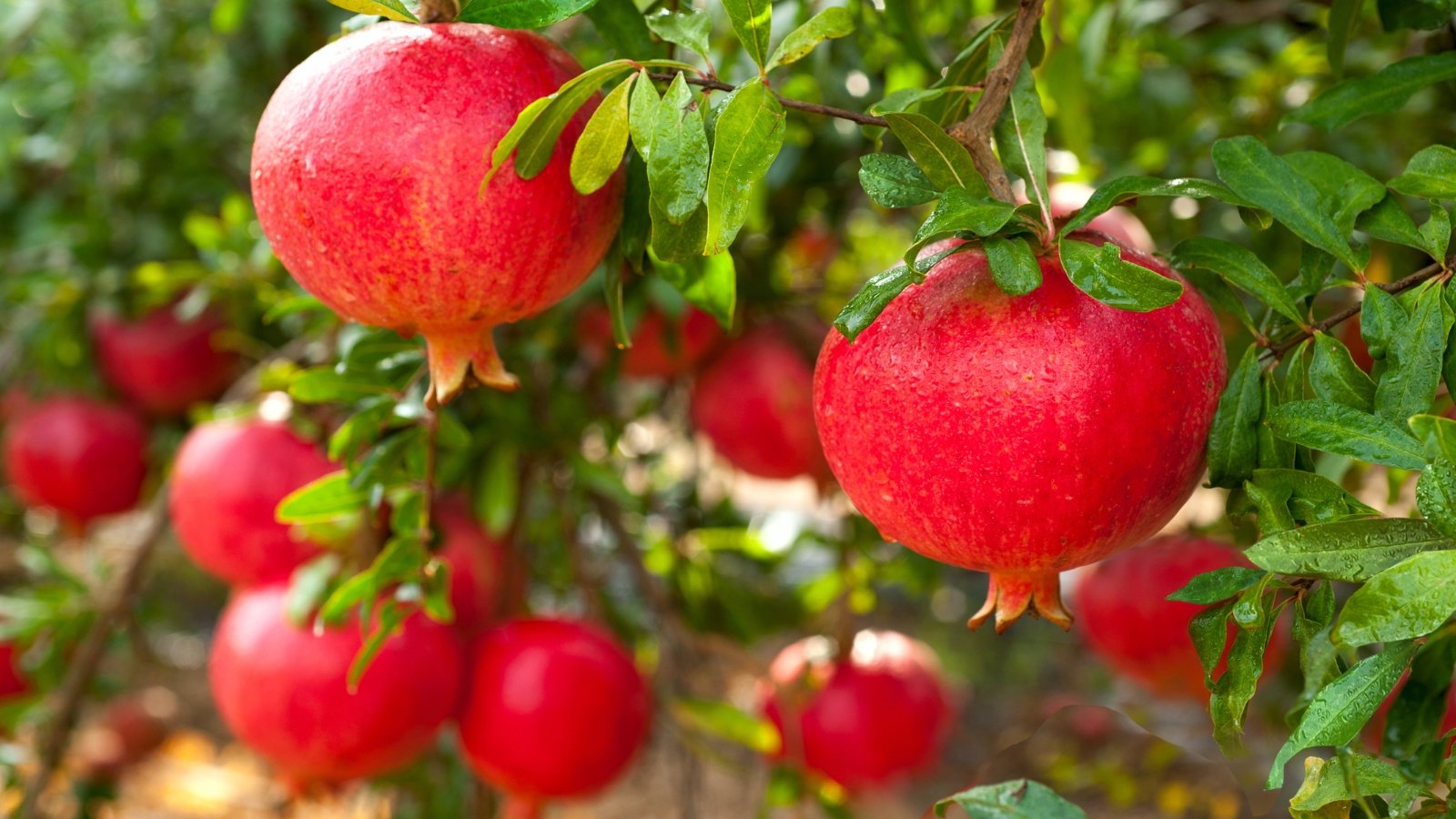
Not only can ‘Texas Pink’ pomegranate plants provide you with delicious and juicy fruits, but they also make a beautiful addition to most gardens. This spring fruit tree is pleasantly ornamental and compact. The plants grow as large shrubs or small trees and max out at 15 feet tall and 10 feet wide. They feature a slender, twisting trunk, dark green leaves, and beautiful red flowers.
The flowers are self-fertile, so you only need one plant to end up with fruit. However, adding two or more plants to your garden will increase each plant’s yield. Depending on where you live, the red, round fruits will be ready to harvest sometime in September or October.
Once you harvest the fruits, you can eat the juicy arils out of hand, sprinkle them in salads, or juice them. Whatever option you choose, expect to enjoy a tangy flavor with a touch of sweetness.
‘Fuyu’ Persimmon
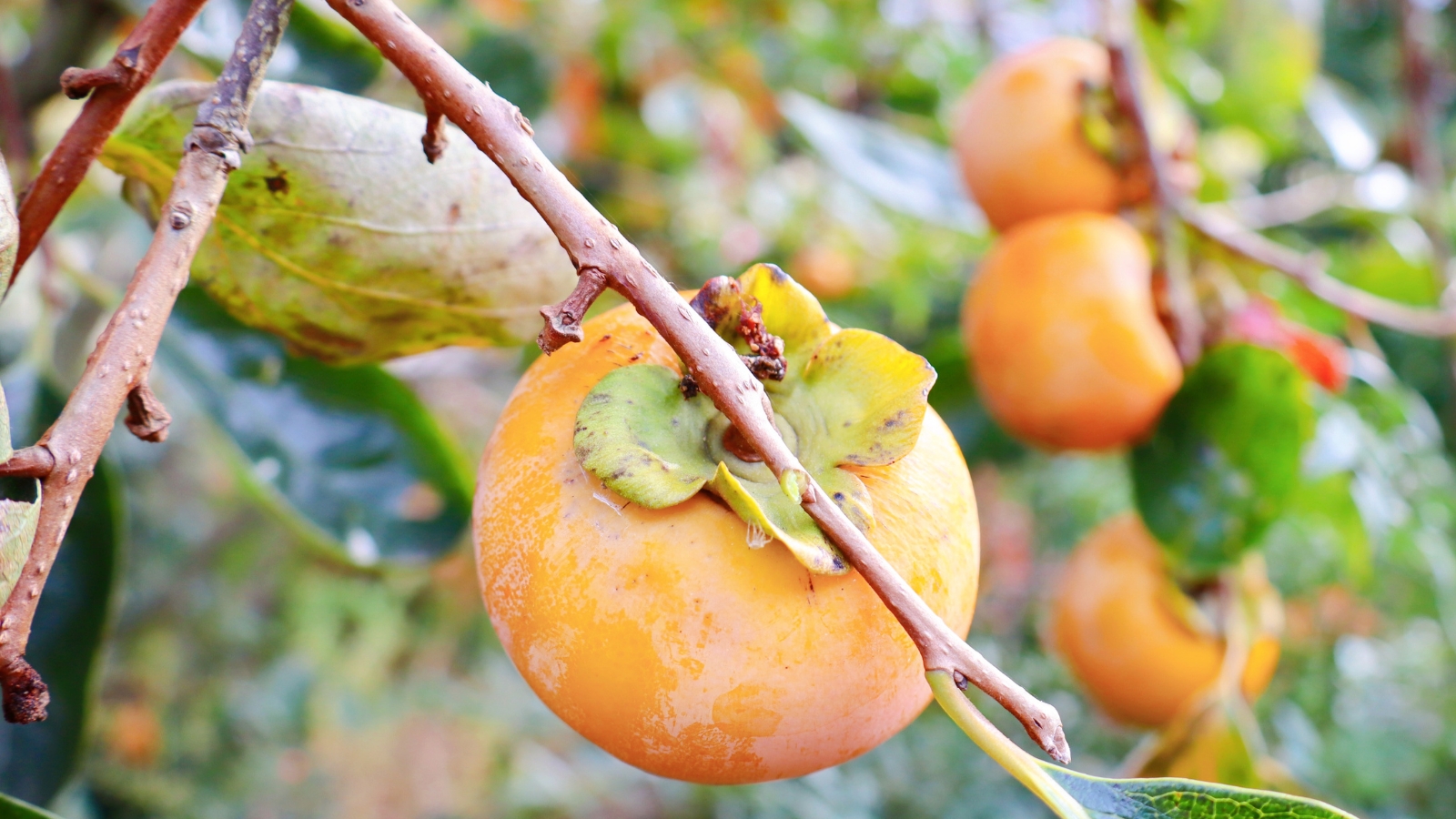
If you live in the Eastern or Central United States, you may be familiar with the native common persimmon (Diospyros virginiana). While these large trees can produce sweet, sticky fruits, the fruit’s small size and often astringent nature when unripe make it tricky to enjoy. That’s where the ‘Fuyu’ persimmon comes in.
This variety of Japanese persimmon produces orange fruits that are just a little smaller than a baseball and have a flattened bottom. You can plant this fruit tree this spring and expect fruits within three to four years. The fruits mature mid-fall and produce silky, sweet flesh that lacks any astringency. You can enjoy the plants fresh or in baked goods and preserves.
The flowers are self-pollinating, and the fruits are seedless. And since the trees can begin producing fruit as early as year three, you won’t have to wait long to enjoy the tasty persimmons.
‘Wonderful’ Pomegranate
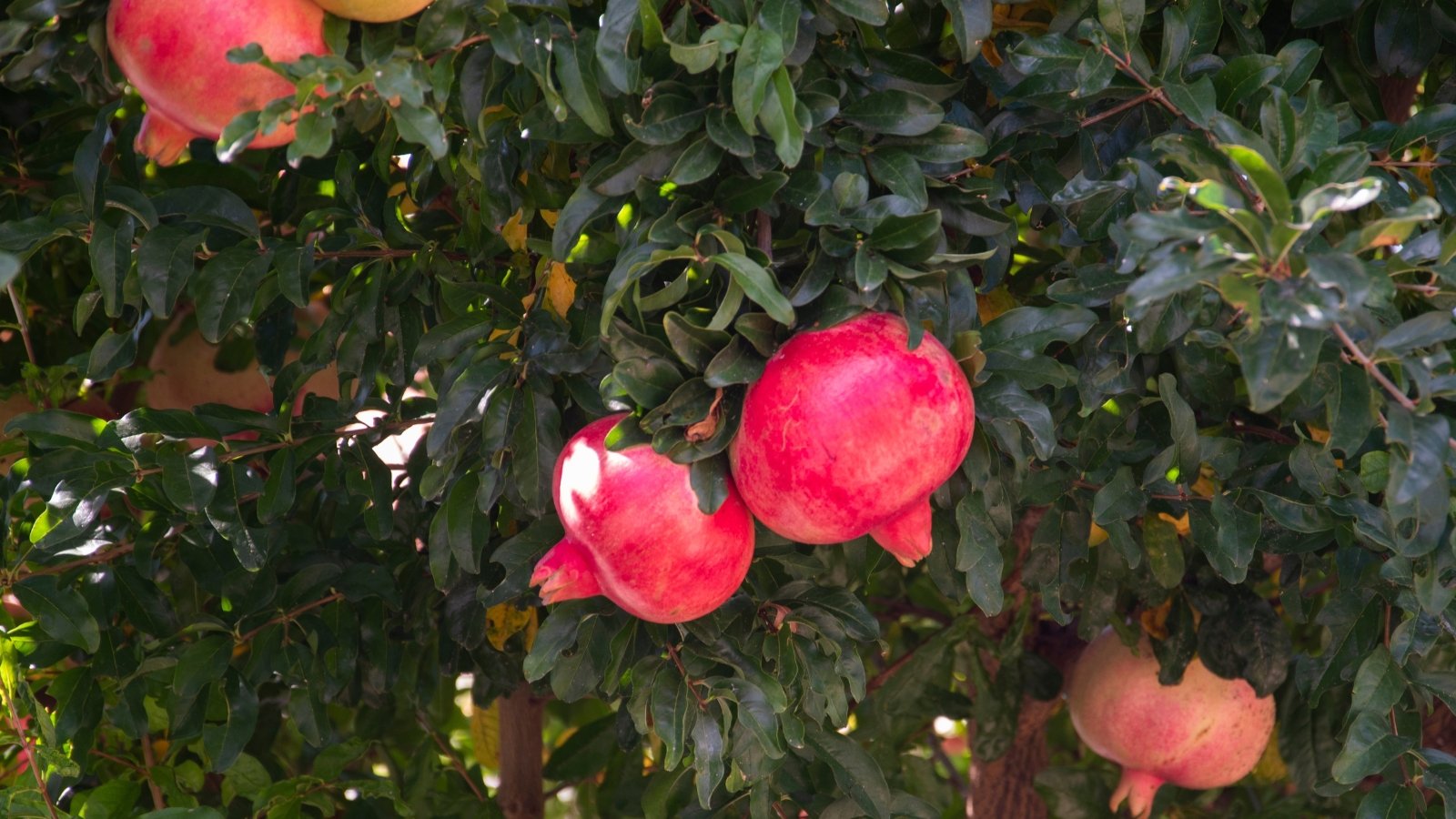
This variety is wonderful for its tasty fruits as well as its drought tolerance and disease resistance! ‘Wonderful’ is well-known for being a hardy pomegranate that requires less care than other varieties. However, it still produces beautiful flowers, attractive foliage, and delicious fruits.
Healthy plants produce large crops in the fall. The red fruits are medium to large in size and filled with sweet-tart, juicy arils. Plants typically begin bearing fruit in their second or third year.
‘Lapins’ Cherry
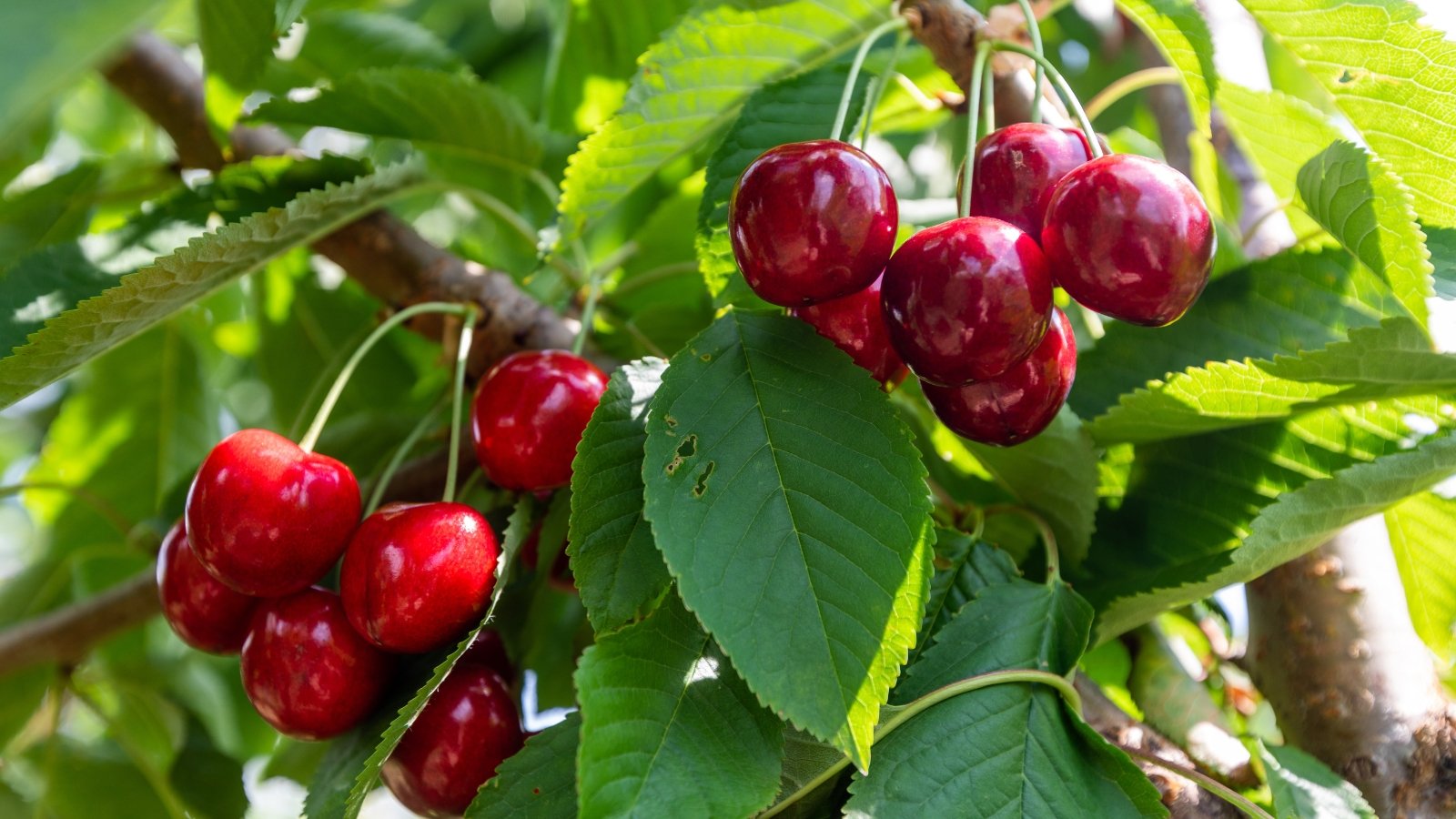
The ‘Lapins’ cherry tree produces loads of sweet fruit that is perfect for eating fresh. But what really sets it apart is its self-fertile flowers. Most sweet cherry varieties require at least two cherry trees to set fruit, so ‘Lapins’ is a great option if you only want to plant one fruit tree this spring.
Before the trees produce deep red fruits, they are covered with billowy white or pink flowers. The flowers turn to fruits that ripen sometime in June or July. ‘Lapins’ trees can begin producing fruit after only a couple of years, and fruit loads will increase as the plants mature.
Gardeners also love this variety for its ability to tolerate late frosts. As the weather becomes more unpredictable, it’s nice to have a cherry tree that can roll with the punches. Since the fruits are resistant to splitting, they’re perfect for areas that experience heavy summer storms.
‘Bing’ Cherry
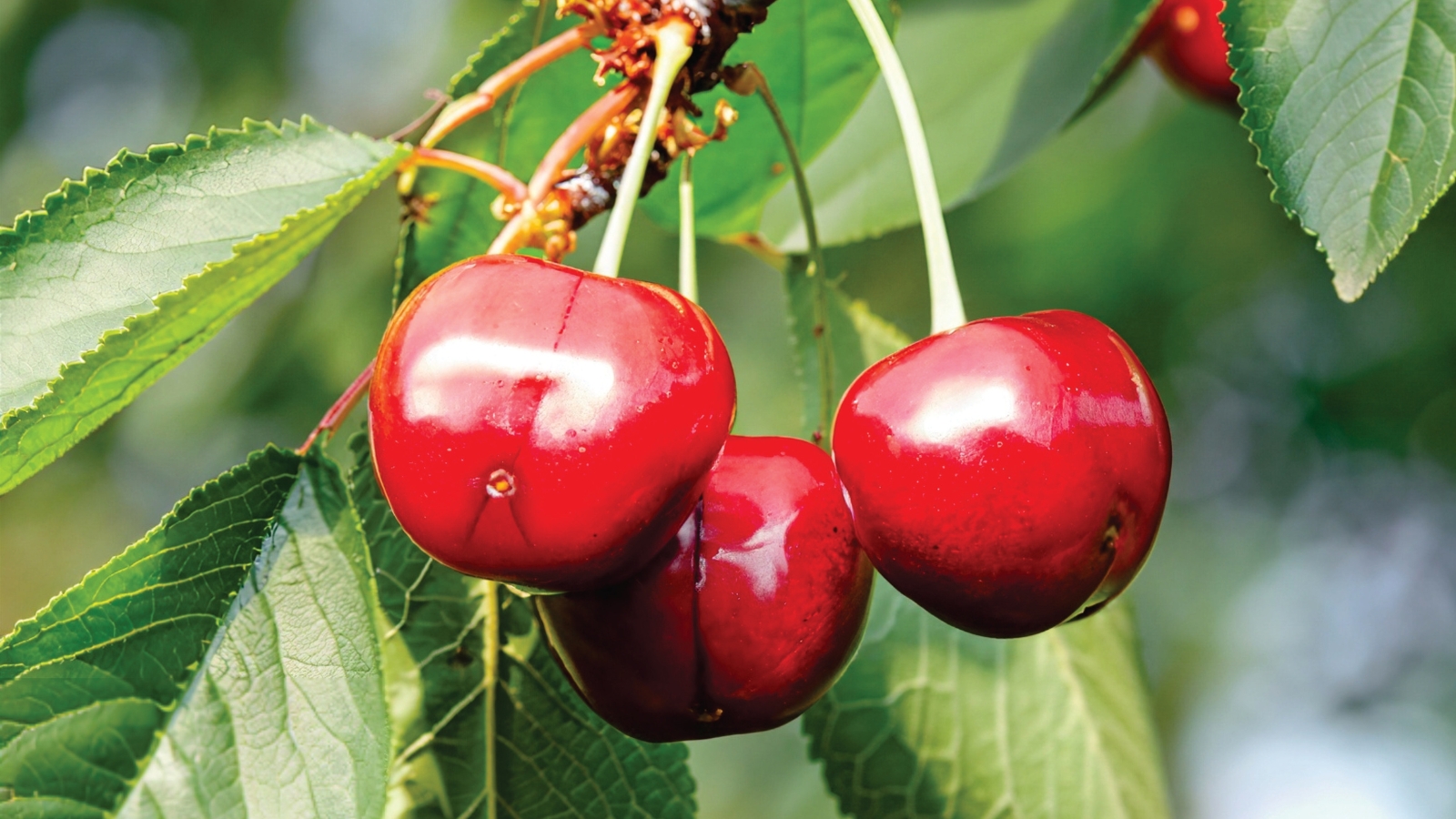
Perhaps the most famous cherry variety, ‘Bing’ is renowned for its impressive yields of large, sweet fruits. To this day, ‘Bing’ cherries are some of the most commonly grown fresh-eating cherries in the Pacific Northwest.
If you want to grow one of these trees at home, be aware that ‘Bing’ cherry trees require cross-pollination for fruit set. Therefore, you need to plant another type of sweet cherry with your ‘Bing’ tree. Feel free to plant a second ‘Bing’ tree or choose another sweet cherry variety.
Although you can grow ‘Bing’ trees in various harvest zones, this variety grows best in areas with dry summers. The cherries are prone to splitting if heavy rains occur when the fruits are ripe.
‘Black Tartarian’ Cherry
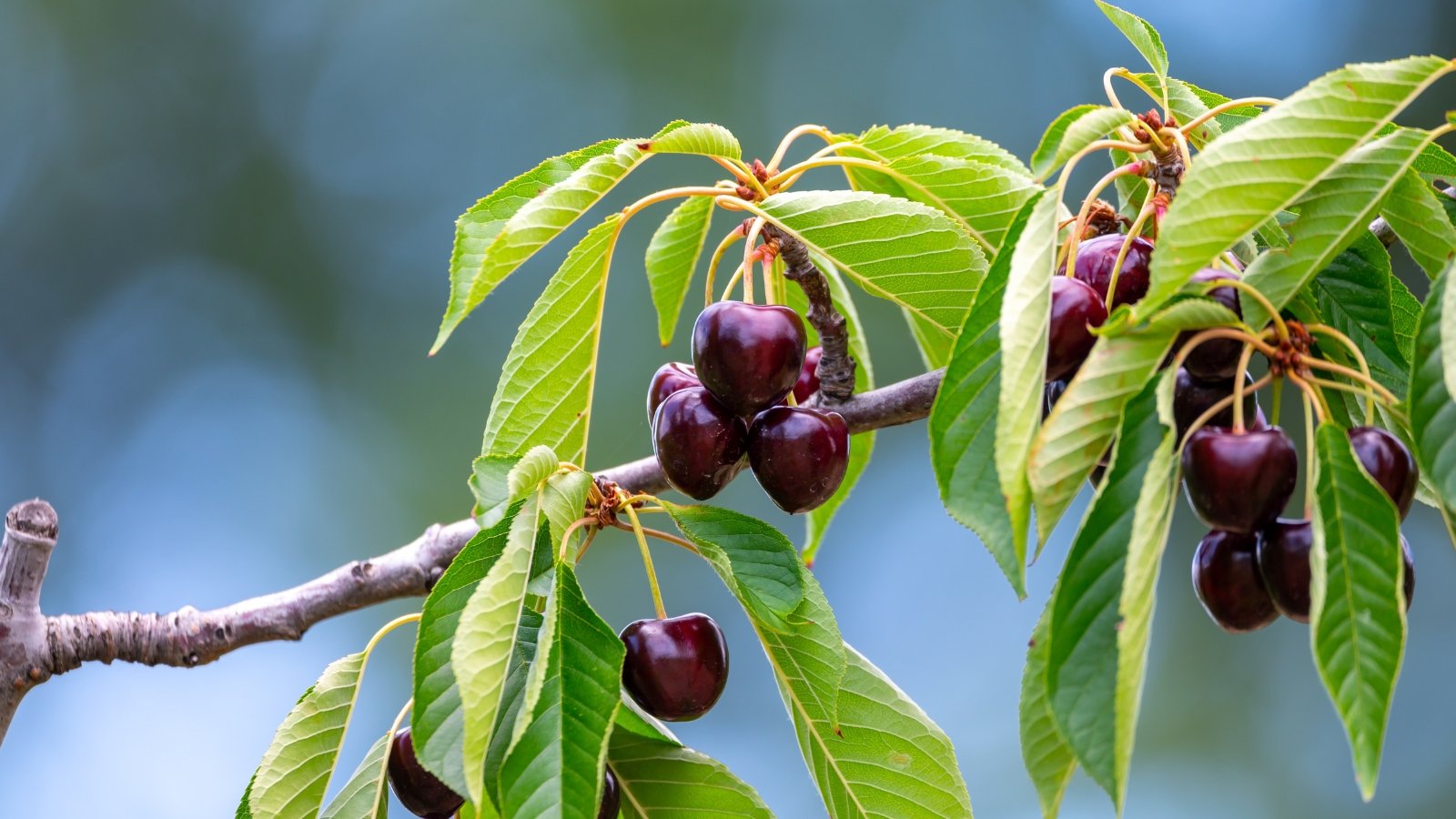
Earlier to ripen than most other sweet cherry varieties, ‘Black Tartarian’ is a great option for impatient gardeners. The deep red cherries typically ripen in June, although they’re sometimes ready in July in cooler climates.
This variety originated in Russia, where it was grown as a prized heirloom. Growers introduced it to Western Europe in the late 1700s, eventually making its way to the United States. Its sweet flesh is great for fresh eating, but it also works well in jams and pies.
‘Black Tartarian’ is not self-fertile, so you need to plant another sweet cherry tree nearby to help with pollination and fruit set. You can plant another ‘Black Tatarian’ or add a different variety.
‘Fuji’ Apple
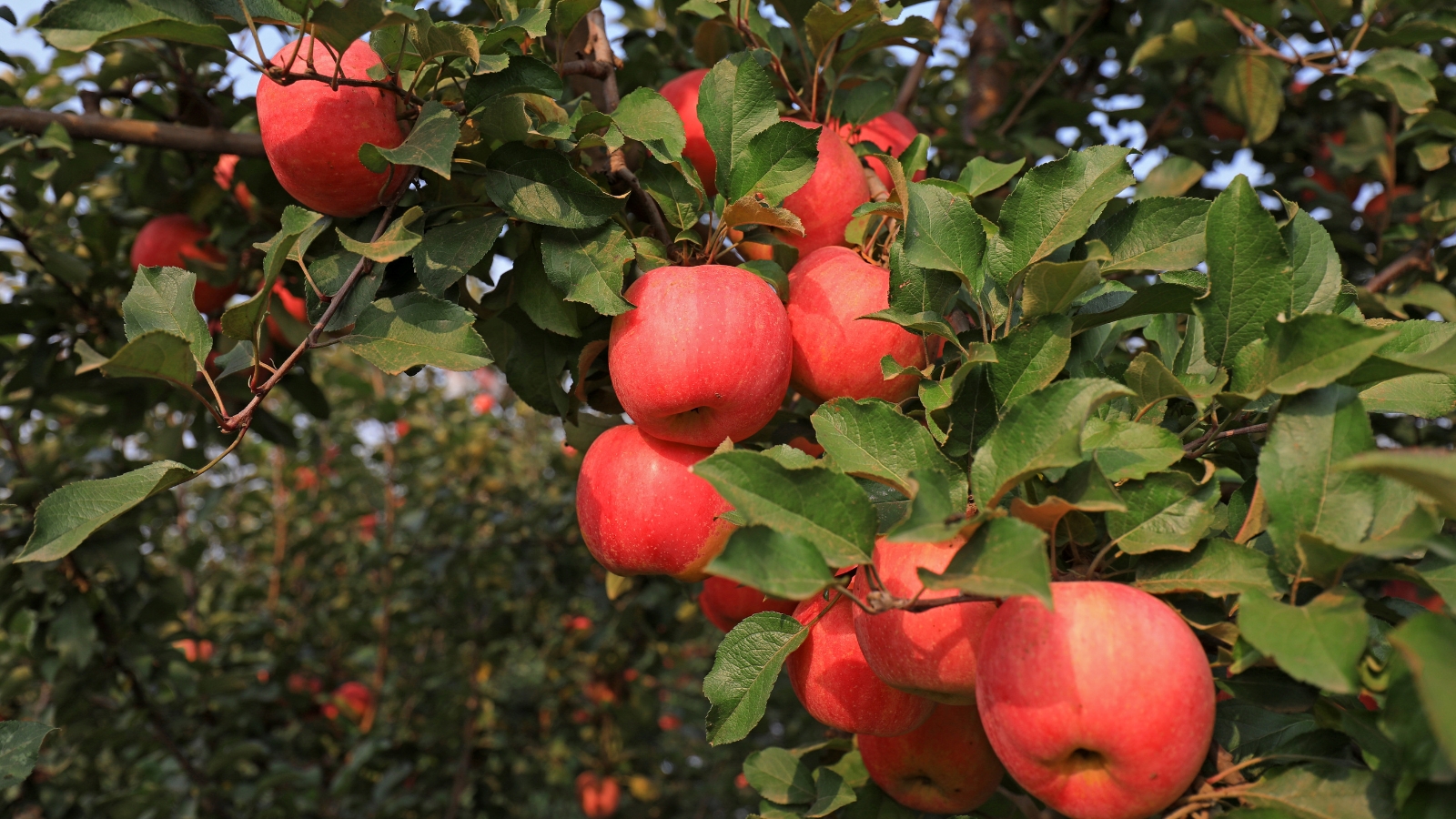
Named for Mt. Fuji in Japan, the ‘Fuji’ apple is beloved for its notable sweet, juicy, and crisp flesh. The fruits are excellent for eating out of hand, slicing into salads, or baking into pies. The apples also store well and can be kept for multiple months under the proper storage conditions.
‘Fuji’ trees are slower to produce fruit than other apple varieties, so don’t expect to harvest apples in the first few years. ‘Fuji’ trees require another apple tree to set fruit. The trees are late producers, so expect to harvest the apples in late September or October. ‘Fuji’ apples are deep yellow with a large red blush.
These plants tend to develop dense, twiggy growth in their interior and grow in a funny shape. Therefore, regular pruning is essential to maintain a proper shape and allow for good airflow.
‘Honeycrisp’ Apple
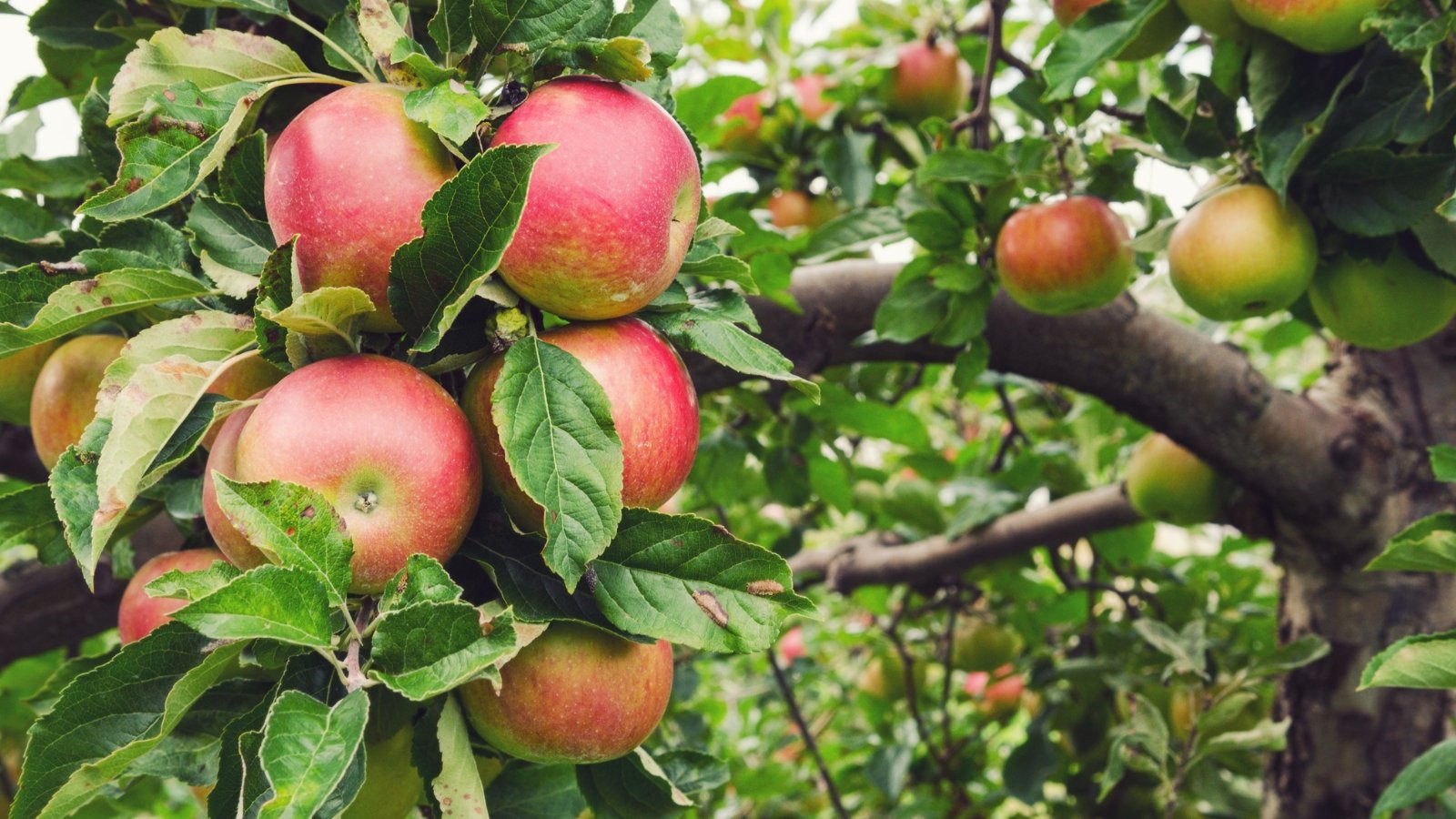
In the past ten years, ‘Honeycrisp’ has become many people’s favorite apple. It has a remarkably crisp texture and a supersweet flavor with pleasant notes of tartness. Its supreme juiciness is due to large cells that burst when bitten.
‘Honeycrisp’ trees are cold-tolerant, so you can grow them in northern climates and areas with high elevations. The fruits are large with characteristic red and yellow streaks. In most locations, they are ready to harvest in September, making them an early apple.
This variety isn’t self-fertile, so it needs another apple tree nearby to produce fruit. You can plant another ‘Honeycrisp’ or choose a different variety.
‘Gala’ Apple
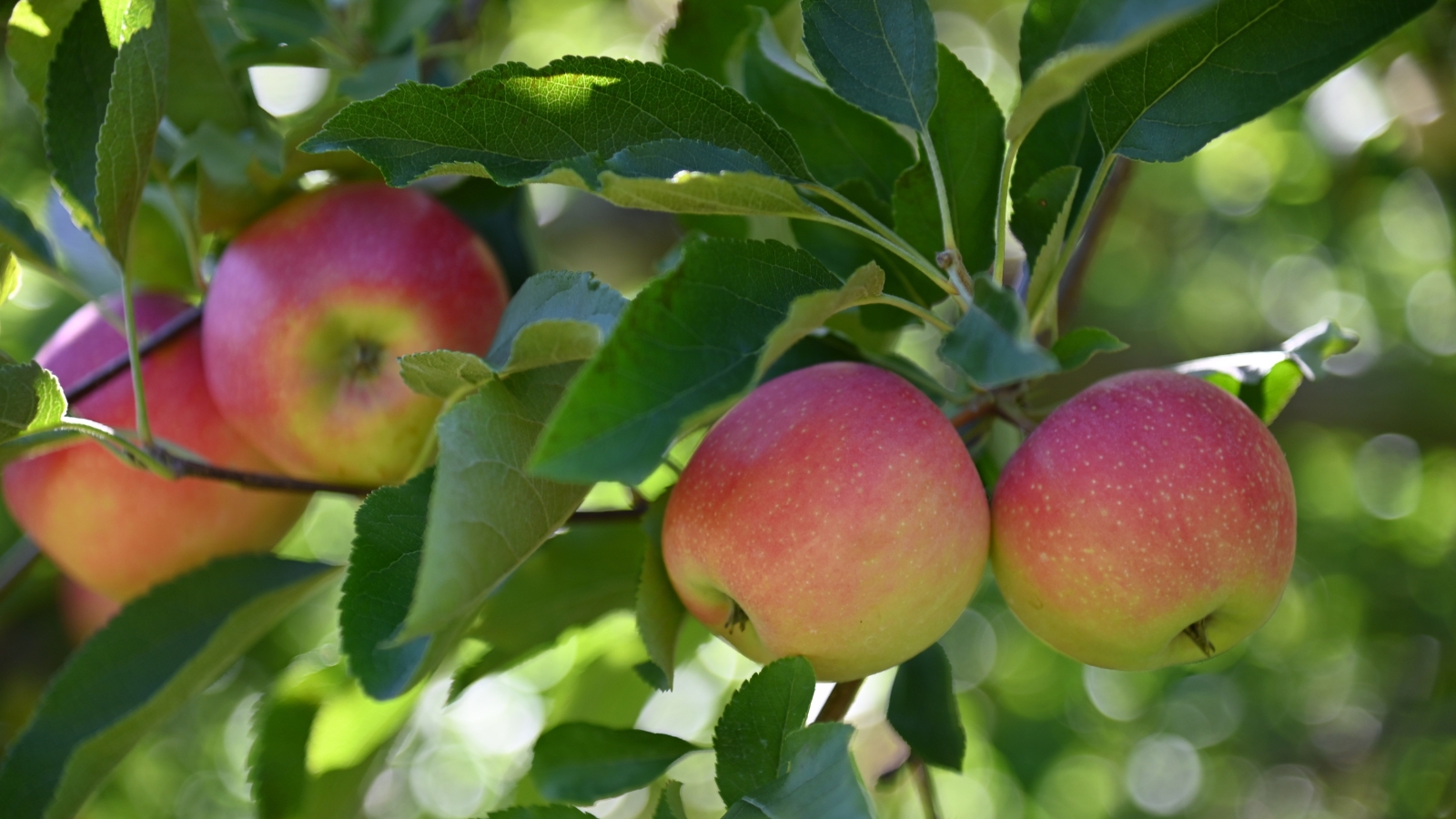
‘Gala’ apples ripen in August or September, making them one of the earliest maturing varieties. The small to medium fruits have green skin that develops a bright red blush when ripe. Their flesh is crispy and sweet, making them a great apple for eating fresh.
Along with producing fruits early in the season, ‘Gala’ trees also begin fruiting early on in their life cycle. Therefore, they’re a good option if you want to start harvesting apples a few years after picking.
These apples keep well and can store for up to a year under the proper conditions. They also taste great in pies, ciders, and dried apple chips.
‘Bubblegum’ Plum
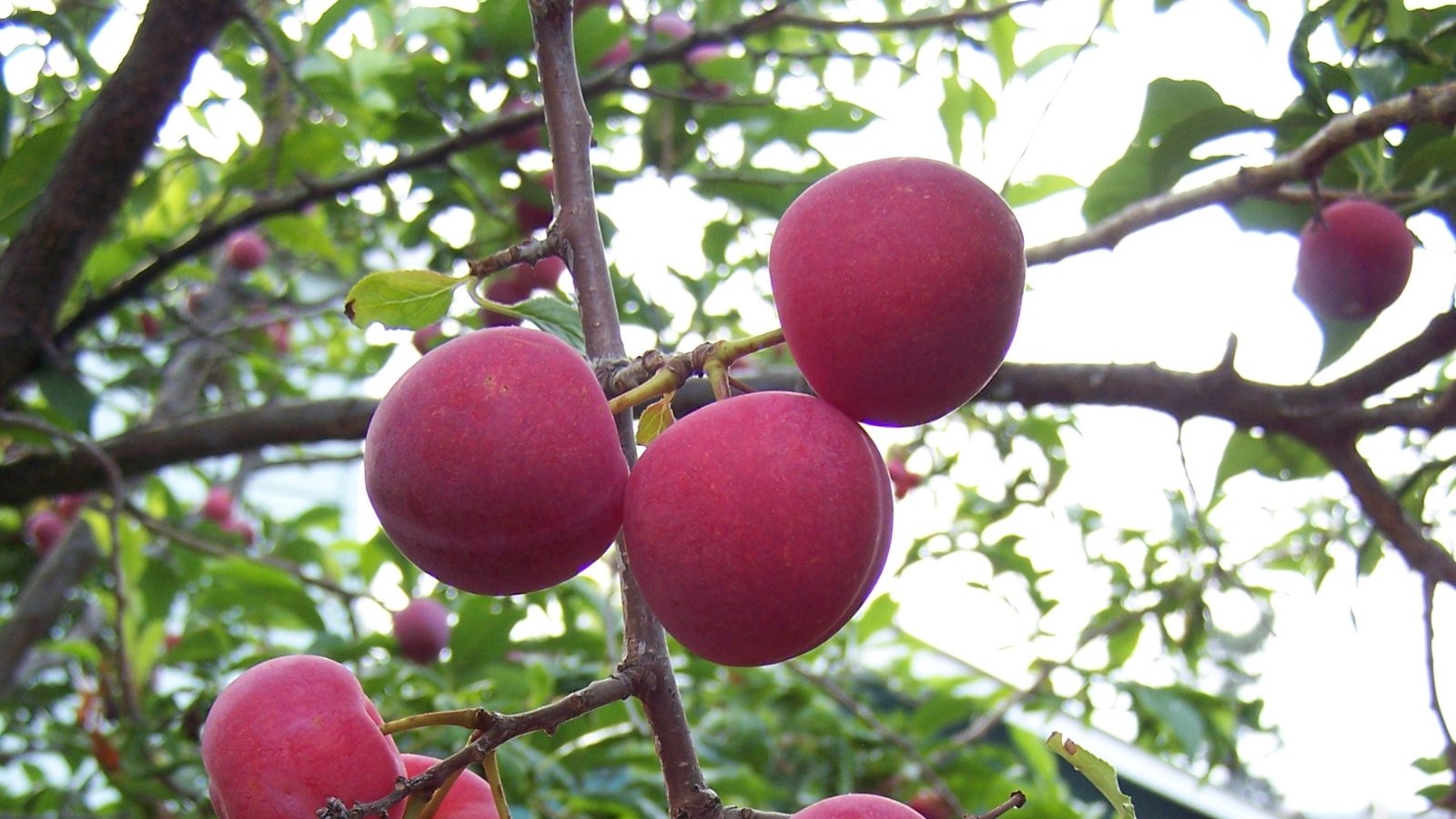
Also known as ‘Toka,’ the ‘Bubblegum’ plum gets its name from its super sweet flesh. The fruits are medium in size, with purple-red skin and a bright yellow interior. Depending on where you live, expect the clingstone fruits to be ready to harvest in July to early September.
‘Bubblegum’ plums are also extremely cold tolerant, so they grow well in most areas of the United States. They require another plum tree to produce fruit, so make sure you add a second tree to your property if there’s not already one growing nearby.
‘Potomac’ Pear
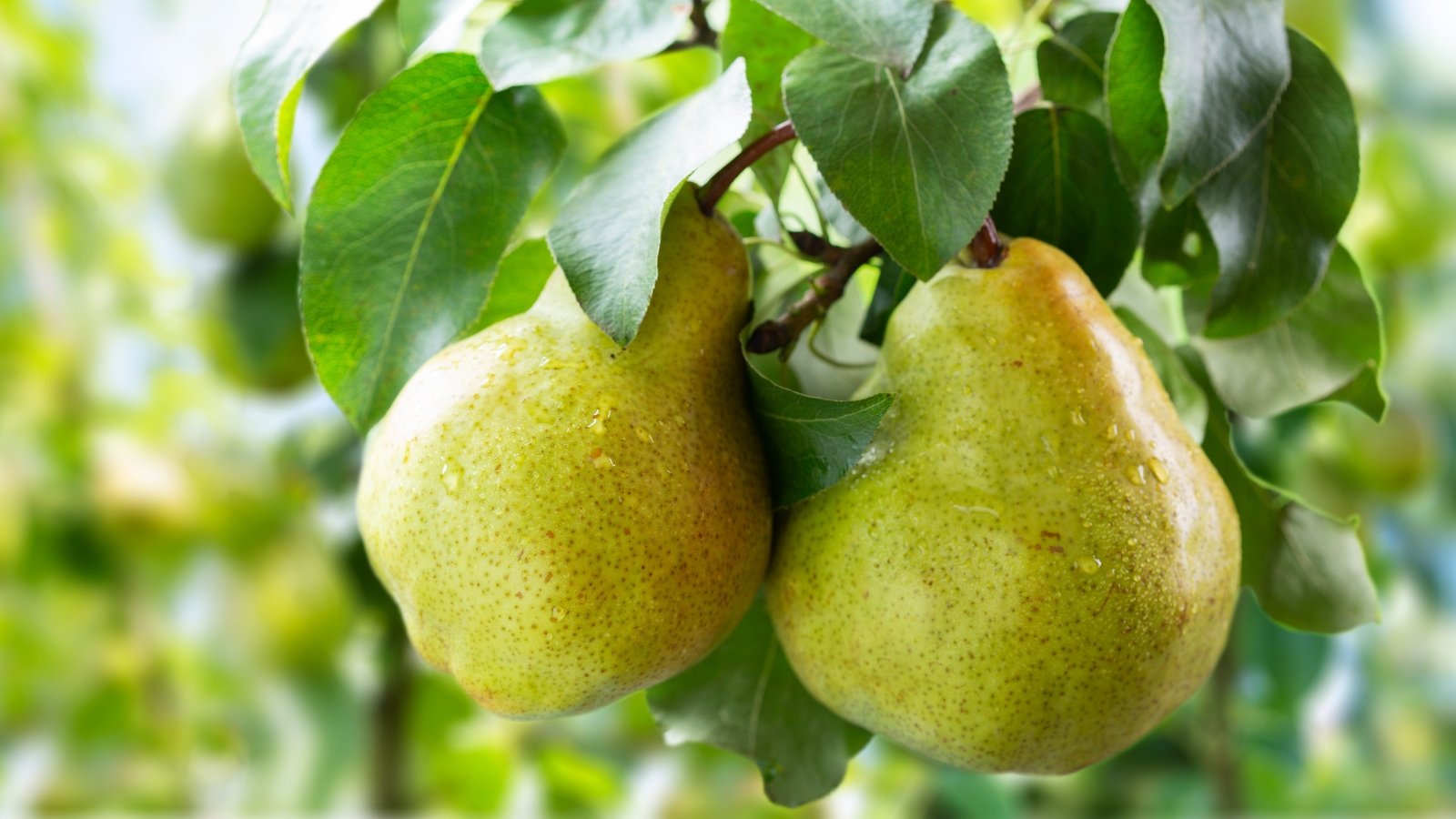
If you like Anjou pears, you’ll love the ‘Potomac’ tree. This variety produces fruits that look and taste similar to the better-known Anjou fruits, but the trees hold impressive fire blight resistance. Therefore, they’re great candidates for humid areas as well as organic growers.
‘Potomac’ pears are ready to harvest in late summer or early fall. You can store the fruits for one to two months as long as you pick them when they’re still firm and keep them somewhere cool.
Since this variety isn’t self-fertile, you need to plant another pear tree nearby if you want to harvest fruit. The variety isn’t important, but avoid ‘Seckel’ pears since they aren’t suitable pollinators.
Final Thoughts
Whether you dream of harvesting juicy peaches and cherries in the summer or baking a pie with homegrown apples, spring is the perfect time to plant fruit trees. Remember to consider your growing zone and yard size when picking out a fruit tree to plant. And don’t forget to plant more than one tree if you’re adding a variety that requires a pollinator!




